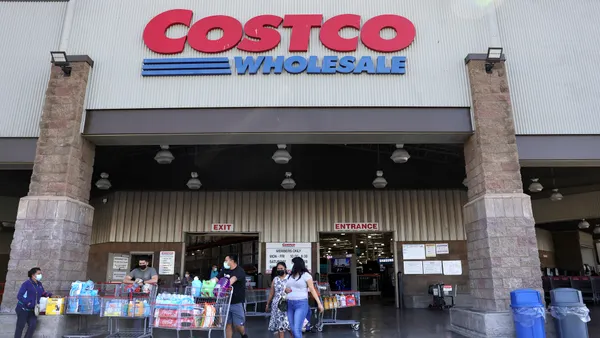The days of procurement being just a back-office function are over. Sourcing and purchasing are critical business processes that have become increasingly complex due to macroeconomic forces, tariffs, shifting regulations and even risk factors like global conflicts and extreme weather. Add to this the pace of technological change in the supply chain space, and you have a perfect storm of challenges facing procurement departments across industries.
Leaders recognize the challenges in procurement, but they see evolving opportunities, too. Recent research shows that procurement is now more likely to be seen as a strategic organizational partner, and most survey respondents (59%) expect their procurement budgets to grow in 2025.
“Procurement is a key competitive advantage, allowing companies to reduce costs, increase operational efficiencies and fuel growth initiatives," says Shelley Salomon, vice president with Amazon Business.
How can procurement leaders ensure they’re acting as a value driver for their organization, and where should they focus their efforts to increase their strategic contributions? Through a mix of core competencies and new capabilities, procurement can level up to achieve its full potential.
Cost management plus advanced technology
Core competencies are precisely what their name suggests — central to successful procurement functions and at the top of leaders’ lists of priorities. In a recent survey, 57% of companies said cost savings are a top organizational priority related to procurement, while the same number (57%) also said supply chain reliability is a leading priority.
This emphasis on traditional procurement skills makes sense in today’s environment. Inflation and economic volatility are significant business concerns, with 49% of executives saying monetary uncertainty is their top organizational risk in the next 12 to 18 months.
However, procurement leaders need new tools and strategies to succeed at these core priorities. Digitalization and automation are no longer nice-to-haves — they’re required. In another recent survey by The Economist, 57% of respondents said digitalization is their top strategic priority for procurement in the next 12 to 18 months. AI is now at the forefront of these efforts, and procurement can gain efficiencies and stay ahead of changing conditions with AI-powered technology.
Spend analytics, for example, can reveal trends and anomalies to flag unusual spending patterns. Predictive analytics improves supplier management by proactively alerting procurement to supply chain risks. Generative AI (Gen AI) is poised to play an increasingly important role in demand forecasting and identifying potential supply chain risks before they cause significant disruptions.
The importance of advanced technologies means that companies must invest in procurement’s technological skills. The skills gap is currently a leading concern for businesses — over half (53%) of survey respondents said technological proficiency will be the most essential procurement skill five years from now, but less than a quarter (24%) say their organization’s skill level is “expert” today.
Addressing these gaps with upskilling and training will be critical to achieving procurement’s core functions as AI and automation become standard tools in the procurement function.
Sustainability and flexibility work in tandem
As we’ve seen, supply chain reliability is a top organizational priority for businesses, and with the implementation of tariffs and new regulations, this is increasingly complex to achieve. The result is that two seemingly contradictory shifts are at play — supplier consolidation and diversification. Recent research shows a split: 40% say they’re diversifying, and a quarter (26%) say they’re consolidating to address trade policies and risk factors.
How can procurement chart the right course? By doubling down on socially responsible purchasing and sustainable sourcing. Procurement teams that source sustainably bring greater value to their organization in multiple ways:
- Partnering with local businesses and suppliers: This boosts local economies while reducing transportation costs and emissions — a win-win for procurement, suppliers and their communities. As trade policies evolve, local sourcing can reduce regulatory costs as well.
- Choosing suppliers focused on waste reduction: Whether it’s bulk purchasing or more sustainable packaging (or both), working with efficient suppliers that reduce waste can lower companies' costs.
- Ensuring compliance with regulations: Increasing supply chain sustainability supports regulatory compliance with the EU’s Corporate Sustainability Reporting Directive (CSRD). Verifying responsible suppliers reduces risks related to labor and human rights policies, while reducing Scope 3 emissions through a more sustainable supply chain supports progress toward public climate pledges.
Partners such as Amazon Business provide tools to improve organizations' sustainable sourcing. Companies can access many suppliers to find local vendors, and paid features like Guided Buying simplify the process of finding certified businesses.
“When businesses work with Amazon Business, they gain more than procurement solutions. They get flexible strategies to drive meaningful impact. Whether partnering with small, local or diverse sellers or pursuing their sustainability goals, they can make choices that meet their goals,” says Natalia Montuori, director, third party sellers, services and socially responsible purchasing at Amazon Business.
The next stage in procurement’s evolution
Sourcing and procurement have become increasingly critical to business success, while technology continues to revolutionize day-to-day operations. Traditional competencies remain vital, but new tools and skills are required to fully unlock procurement’s strategic role and deliver actionable insights across the organization.
At the same time, sustainability remains a top priority in an evolving regulatory landscape. Procurement departments that source responsibly will gain the agility needed to navigate shifting policies — a crucial advantage in today’s climate of uncertainty.
Although technologies and risk factors may change, procurement's value remains constant. With the right solutions, that value can increase even more.
Learn more about Amazon Business solutions for your procurement department.










